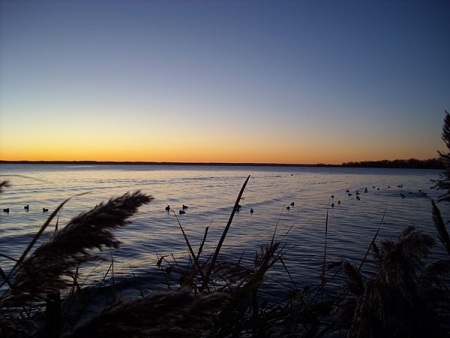Time to Work Your Outdoor Mojo!
As we near the end of winter and head toward the beginning of spring, it’s time for those who are interested in waterfowl in Wisconsin to get busy on some projects to help our returning migratory birds improve in their nesting success. Perhaps the best known means of making this aid is to build, install and maintain wood duck houses. This is certainly no new program, but many years of research have given us some guidance to make sure your efforts are as successful as possible:
Perhaps the best known means of making this aid is to build, install and maintain wood duck houses. This is certainly no new program, but many years of research have given us some guidance to make sure your efforts are as successful as possible:
- Build your houses from natural wood. Cedar is weather resistant, but any wood construction is superior to metal or plastic houses, which have a tendency to build up heat in the later spring, when things get warmer, but young broods aren’t quite ready to leave yet.
- Mount your houses over water, if possible. This is the best way to avoid predation from raccoons and other hungry critters after eggs. If this isn’t possible, mounting on a pole, with a predator guard cone, is the next best plan. The classic tree mount, sadly, provides either great squirrel housing, or a tasty buffet offering.
- Remember, the mounting is just the start. You must maintain your boxes, at least annually, by removing the prior year’s shells, if any, and by placing a new base of cedar bedding chips in the bottom of the box. This is necessary to ensure the box is safe and ready to receive a new brood for the new year.
This is best accomplished right around this time of year. Even better is to remove egg shells following the brood vacating the nest in early summer; you’ll get a more accurate count of how many hatched, and the nest would be prepped for a second, later use, if needed by another hen.
A Home For The Hens
However, wood duck boxes are not the only kind of nesting structure you could build to help improve nesting success this spring. “Hen houses” are tubes constructed from wire fencing and straw to create a safe refuge for mallard hens, in an elevated position, to help them avoid predation and flooding of their nesting sites.
- Choosing a site over water, 3-5 feet from emergent vegetation, is key. However, it’s important to remember that movement of ice or flood waters and their fast moving debris can also wreck your plan—so these factors need to be considered when placing a hen house site and determining how high to place it over the current water/ice level.
- Ensuring that your hen house is perpendicular, the prevailing winds will help shield the brood from weather, and help keep nesting materials from blowing out of the tube.
More information on both wood duck boxes, and hen houses can be found on the Wisconsin Waterfowl Association’s website: wisducks.org.
From the “Habitat” tab you’ll find information from our volunteers, plus links to other websites with key information, including the Wood Duck Society and our friends at Delta Waterfowl. There’s a great deal of information available out there to help you understand how maintaining a nesting structure program can help waterfowl in the spring, and how to get started on your efforts.
Either of these ideas can be a great family project. There are plenty of aspects to the effort that can involve the young ones, and help instill in them a responsibility for ensuring the success of the species that we love to see zooming through our October skies. Spend a bit of time creating the nesting structure together, then locate an appropriate place to place your new creation. (Be aware: You usually can’t just put up nesting structures on public lands without obtaining permission, first.)
Afterward, you can go back and determine its usage (count shells) next winter, and do its maintenance for the next year. You might even get lucky and get to see it in use, during May and June, until the broods are ready to move on.
You might find that starting a new tradition of “working on the wood duck boxes” is one that sticks with your family, and provides a good reason to get out in late winter when otherwise you’re left with little to do but watch figure skating on TV. Believe me, the ducks, and all of us at WWA will thank you for making the effort!






